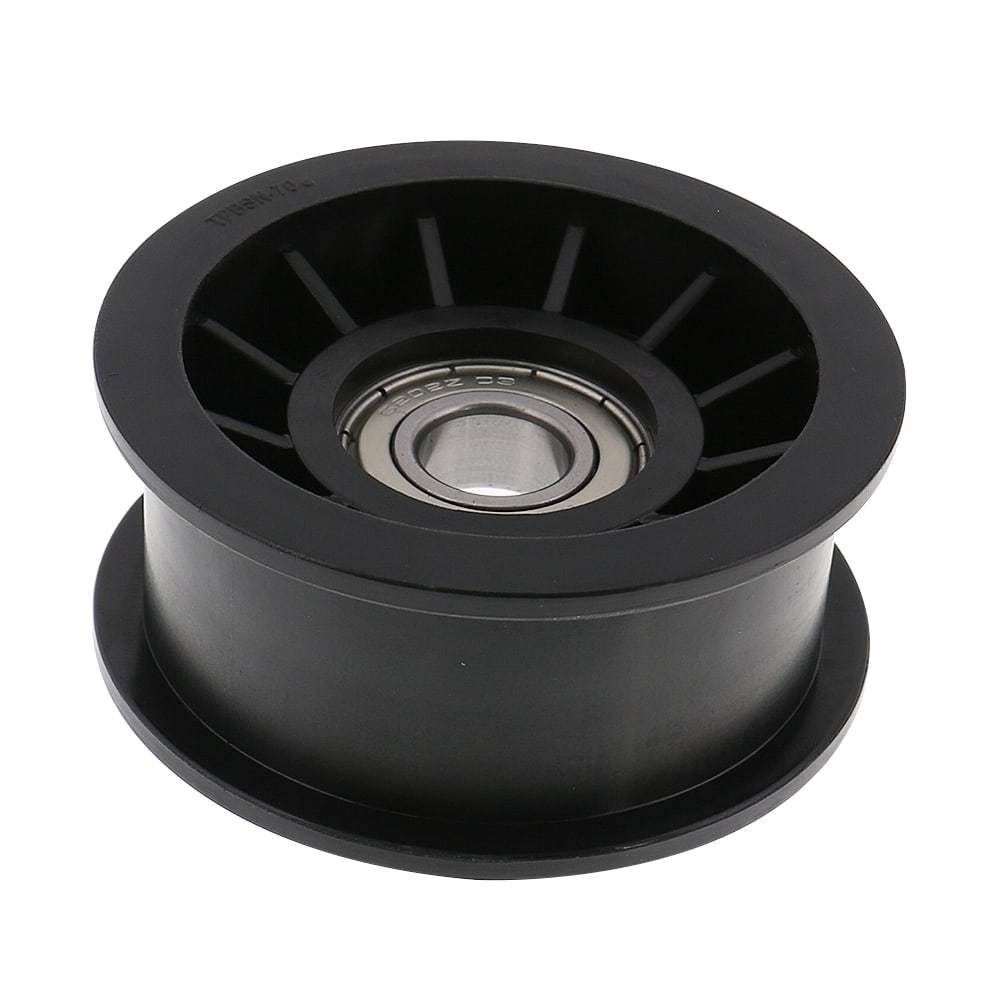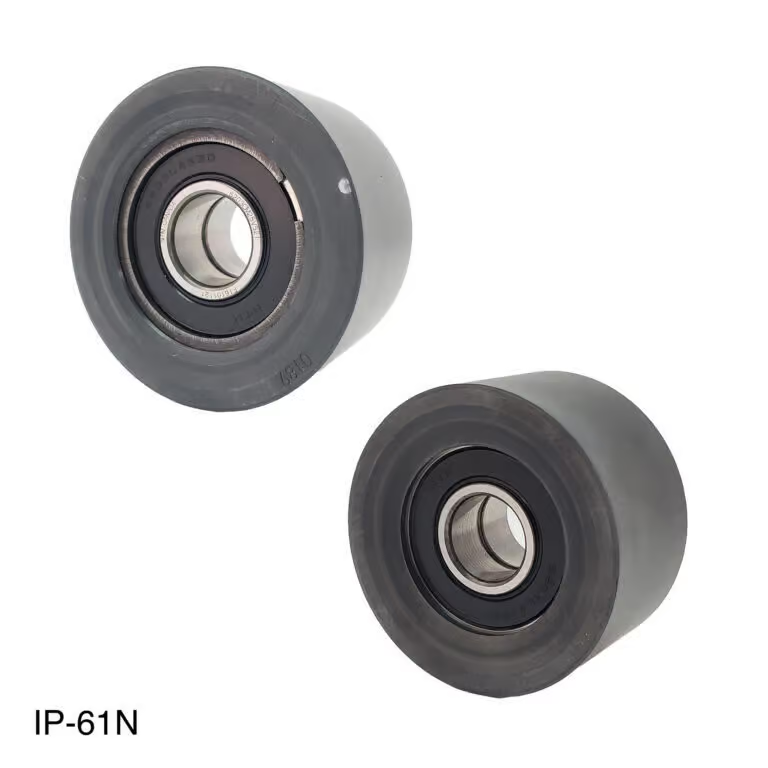Product Description
BASIC INFORMATION
| Description | VKM383 BREDA LORETT : CR 3637 BTA : E2B VAICO : V20-2771 |
APPLICABLE CAR MODELS
| Vehicle Models | Active Years | Engine | Displacement | Power | Cons.Type |
| BMW 5 (E60) 520 i | 2003-2571 | M54 B22 (226S1) | 2171 | 125 | Saloon |
| BMW 5 (E60) 530 i | 2001-2005 | M54 B30 (306S3) | 2979 | 170 | Saloon |
| BMW 5 Touring (E61) 525 i | 2004-2571 | M54 B25 (256S5) | 2494 | 141 | Estate |
| BMW 7 (E65, E66, E67) 730 i, Li | 2003-2008 | M54 B30 (306S3) | 2979 | 170 | Saloon |
| BMW X3 (E83) 2.5 i | 2004-2006 | M54 B25 (256S5) | 2494 | 141 | SUV |
DETAILED PICTURES
PACKAGING & SHIPPING
| Packaging Details | 1 piece in a single box 30 boxes in a carton 40 cartons in a pallet |
| Nearest Port | ZheJiang or HangZhou |
| Lead Time | For stock parts: 1-5 days. If no stock parts: <500 pcs: 15-30 days ≥500 pcs: to be negotiated. |
OUR SERVICES
– We have more than 20 years experience in auto bearings fields.
– Excellent quality control is 1 of our main principles
– We offer OEM service, accept customer label, develop the product with your drawings or samples
– Any questions will get response within 24 hours.
FAQ
1.How do you make our business long-term and good relationship?
– We keep good quality and competitive price to ensure our customers benefit ;
– We respect every customer as our friend and we sincerely do business and make friends with them,
no matter where they come from.
2. Do you test all your goods before delivery?
– Yes, we have 100% test before delivery
3. What is your terms of payment?
– T/T 30% as deposit, and 70% before delivery. We’ll show you the photos of the products and packages
before you pay the balance.
4. What is your terms of delivery?
– EXW, FOB, CFR, CIF, DDU.
| After-sales Service: | 24 Hours |
|---|---|
| Warranty: | 1 Year / 30000-50000kms |
| Type: | Tensioner Bearing |
| Material: | Chrome Steel |
| Tolerance: | P0 |
| Certification: | ISO9001, TS16949 |
| Samples: |
US$ 4/Piece
1 Piece(Min.Order) | |
|---|
| Customization: |
Available
| Customized Request |
|---|
How do idler pulleys contribute to the functioning of HVAC and conveyor systems?
Idler pulleys play a crucial role in the functioning of HVAC (Heating, Ventilation, and Air Conditioning) and conveyor systems. Here’s a detailed explanation of how idler pulleys contribute to the operation of these systems:
HVAC Systems:
In HVAC systems, idler pulleys are primarily used for power transmission and belt tensioning. Here are the key ways in which idler pulleys contribute to the functioning of HVAC systems:
1. Belt Routing and Tensioning:
Idler pulleys guide and support the belts used in HVAC systems, ensuring proper routing and tensioning. They help keep the belts in alignment with the driving and driven pulleys, preventing slippage and ensuring efficient power transmission. Idler pulleys maintain the necessary tension in the belts, which is crucial for optimal HVAC system operation.
2. Load Distribution:
Idler pulleys assist in distributing the load evenly across the HVAC system. By supporting the movement of belts, they help distribute the load and minimize stress on individual components. Proper load distribution ensures balanced wear and tear, prolonging the lifespan of the system.
3. Noise and Vibration Reduction:
Idler pulleys contribute to reducing noise and vibration in HVAC systems. They help dampen vibrations caused by belt operation, resulting in quieter and smoother system performance. Reduced noise and vibration levels enhance the comfort and usability of the HVAC system.
4. System Efficiency:
Efficient idler pulley operation improves the overall efficiency of HVAC systems. Well-designed idler pulleys with low friction and proper tensioning minimize power losses, ensuring optimal energy consumption. By reducing inefficiencies and maximizing energy conservation, idler pulleys contribute to improved HVAC system performance.
Conveyor Systems:
In conveyor systems, idler pulleys are essential for belt support, tensioning, and guiding. Here’s how idler pulleys contribute to the functioning of conveyor systems:
1. Belt Support:
Idler pulleys provide support to the conveyor belt, preventing sagging and maintaining its shape. They are strategically positioned along the belt path to support the weight of the conveyed material, ensuring smooth and reliable transportation. Proper belt support is crucial for preventing belt damage and ensuring efficient material handling.
2. Tensioning:
Idler pulleys are used for belt tensioning in conveyor systems. They help maintain the appropriate tension in the conveyor belt, ensuring proper engagement with the drive pulley and preventing slippage. Proper belt tensioning is critical for efficient power transmission and preventing material spillage or jamming.
3. Belt Guiding and Tracking:
Idler pulleys guide and track the conveyor belt, ensuring it stays aligned and centered. They are designed with grooves or cylindrical surfaces that match the shape of the conveyor belt, providing guidance and preventing lateral movement. By maintaining proper belt tracking, idler pulleys minimize belt misalignment, reducing the risk of damage and improving overall conveyor system performance.
4. Load Distribution:
Idler pulleys contribute to even load distribution in conveyor systems. By supporting the belt and load, they help distribute the weight evenly across the system, minimizing stress on individual components. Proper load distribution ensures reliable and efficient operation, preventing premature wear and component failure.
5. System Reliability:
Reliable idler pulley operation is crucial for the overall reliability of conveyor systems. Idler pulleys that are correctly sized, well-maintained, and properly lubricated contribute to the smooth and continuous operation of the system. They help minimize downtime, reduce the risk of belt slippage or jamming, and ensure the efficient movement of materials.
Overall, idler pulleys are essential components for the functioning of HVAC and conveyor systems. Their role in belt routing, tensioning, load distribution, noise reduction, system efficiency, and reliability makes them integral to the smooth operation and performance of these systems.
How do idler pulleys impact the performance of automotive and industrial systems?
Idler pulleys play a crucial role in the performance of automotive and industrial systems. Here’s a detailed explanation of how idler pulleys impact the performance of these systems:
1. Belt Tension and Stability:
Idler pulleys help maintain proper belt tension in automotive and industrial systems. They guide and support the belts, ensuring they remain engaged with the pulleys and operate with the desired tension. Proper belt tension is crucial for efficient power transmission, preventing slippage, and maintaining stability in the system. Idler pulleys contribute to the overall reliability and performance of the system by ensuring consistent and reliable belt tension.
2. Belt Routing and Alignment:
Idler pulleys assist in routing and aligning belts in automotive and industrial systems. They are strategically positioned to guide the belts along the desired path, ensuring they are properly aligned with other pulleys and components. Correct belt routing and alignment minimize wear, reduce noise, and optimize power transfer efficiency. Idler pulleys help maintain the desired belt alignment, which is crucial for the smooth operation and longevity of the system.
3. Load Distribution:
Idler pulleys contribute to the even distribution of loads in automotive and industrial systems. By guiding the belts and supporting their movement, idler pulleys help distribute the load evenly across the system. This helps prevent excessive stress on specific components and promotes balanced wear and tear. Proper load distribution enhances the overall performance, reliability, and lifespan of the system.
4. Noise and Vibration Reduction:
Idler pulleys play a role in reducing noise and vibration in automotive and industrial systems. They help dampen vibrations caused by belt operation, minimizing noise and improving the comfort and user experience. By reducing noise and vibration levels, idler pulleys contribute to a quieter and smoother operation of the system.
5. System Efficiency and Energy Conservation:
Efficient idler pulley operation positively impacts the overall efficiency of automotive and industrial systems. Well-designed idler pulleys with low friction and proper bearing selection minimize power losses and maximize energy conservation. Idler pulleys that operate smoothly and efficiently contribute to improved system performance and reduced energy consumption.
6. Component Protection:
Idler pulleys help protect other system components, such as belts, by ensuring proper tension, alignment, and load distribution. By maintaining optimal belt operation, idler pulleys prevent excessive wear, slippage, and premature failure of belts and other related components. This protection enhances the reliability and longevity of the entire system.
7. System Reliability and Durability:
The proper functioning of idler pulleys is crucial for the overall reliability and durability of automotive and industrial systems. Idler pulleys that are correctly sized, well-maintained, and appropriately lubricated contribute to the smooth and continuous operation of the system. They help minimize downtime, reduce the risk of component failure, and ensure the system can perform its intended functions reliably over an extended period.
Overall, idler pulleys have a significant impact on the performance, efficiency, reliability, and durability of automotive and industrial systems. Their role in maintaining belt tension, routing and alignment, load distribution, noise reduction, system efficiency, component protection, and overall system reliability makes them essential components in these applications.
How does an idler pulley contribute to the proper tensioning of belts and chains?
An idler pulley plays a crucial role in maintaining proper tension in belts and chains within mechanical systems. Let’s explore how an idler pulley contributes to the proper tensioning:
1. Taking Up Slack:
When a belt or chain is installed in a system, there may be some initial slack or looseness. The idler pulley is strategically positioned to take up this slack by applying tension to the belt or chain. It helps to eliminate any excessive play and ensures that the belt or chain remains properly tensioned.
2. Compensation for Thermal Expansion and Wear:
Belts and chains can experience thermal expansion during operation due to changes in temperature. Additionally, over time, belts and chains may stretch or wear out. The presence of an idler pulley allows for compensation of these factors by providing an adjustable point of tension. The idler pulley can be adjusted to maintain the desired tension, compensating for any expansion or wear that may occur.
3. Preventing Belt or Chain Slippage:
If a belt or chain is not properly tensioned, it can slip or derail from the pulleys or sprockets it is meant to drive. This can lead to loss of power transmission, reduced efficiency, and potential damage to the system. The idler pulley applies the necessary tension to keep the belt or chain securely engaged with the other pulleys or sprockets, preventing slippage and ensuring reliable power transfer.
4. Maintaining Belt or Chain Alignment:
Proper alignment of belts and chains is essential for smooth operation and efficient power transmission. The idler pulley helps maintain alignment by guiding the belt or chain along the correct path and preventing it from wandering or deviating from the intended route. This contributes to reduced wear, noise, and vibration in the system.
5. Absorbing Shock and Reducing Vibrations:
An idler pulley can also help absorb shock and reduce vibrations within the belt or chain system. By providing a point of contact and tension, the idler pulley helps to dampen any sudden or excessive movements, resulting in smoother operation and reduced stress on the system components.
It’s important to note that the proper tensioning of belts and chains requires careful consideration of factors such as the manufacturer’s specifications, load requirements, and operating conditions. The idler pulley, along with other tensioning devices in the system, should be adjusted and maintained to ensure optimal performance and longevity of the belts and chains.
editor by CX
2023-09-23




